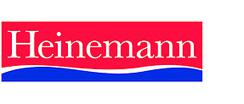- View more resources from this publisher
 Association for Science Education (ASE)
Association for Science Education (ASE)
Better Science 6: For Both Girls and Boys
For Both Girls and Boys was the sixth in a series of 12 booklets published by Heinemann and the Association for Science Education to explore the issues arising from moving towards a broad and balanced science education for all young people. The main purpose of this booklet was to explore ways in which science teachers can work towards providing equal opportunities for students within a broad balanced science education, which does not discriminate against them because of their gender.
Contents
Introduction
SECTION ONE Student perceptions
*Introduction
*Differences in aptitudes and experience
*Self-confidence and self-esteem
*Varied interests
*Different aspirations
*Behaviour
*Different learning styles
*What can be done?
SECTION TWO The influence of society
*Influences during early childhood
*Role models
*What does the future hold?
SECTION THREE The teacher influence
*Resource materials
*Student-teacher interactions
*Messages from our teaching styles
*Behavioural patterns
*Allocating jobs in the classroom
*Checklists
SECTION FOUR Ways forward for the science department
*A curriculum for girls and boys
*A future curriculum
*The tip of the iceberg
SECTION FIVE Conclusions
Further reading
References
Show health and safety information
Please be aware that resources have been published on the website in the form that they were originally supplied. This means that procedures reflect general practice and standards applicable at the time resources were produced and cannot be assumed to be acceptable today. Website users are fully responsible for ensuring that any activity, including practical work, which they carry out is in accordance with current regulations related to health and safety and that an appropriate risk assessment has been carried out.





